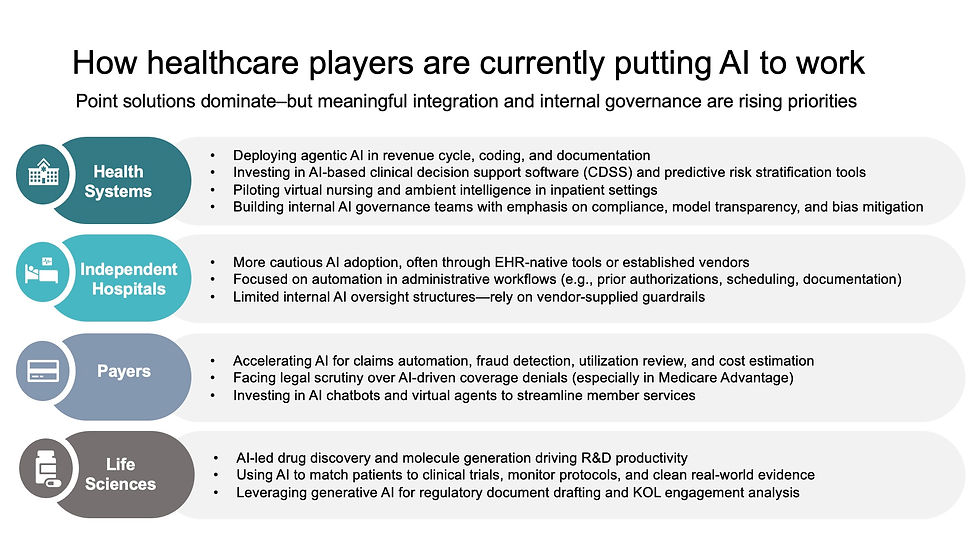Finally delivering real scale in healthcare
- Christopher Kerns

- Feb 29, 2024
- 2 min read
Updated: Jul 19, 2024

Over the years, I've heard a lot of laments about the healthcare industry's lack of scale, usually as a way of wondering why healthcare is so [freakin] expensive, and, more to the point, why prices never seem to decrease as they do in other industries with "scale." But of course, economies of scale mean something very specific: the wondrous ability of fixed assets to produce widgets well in excess of their fixed cost, thereby enabling a drastic reduction in price over time (and yes, I'm oversimplifying, don't come at me in the comments, you know what I mean).
The reasons for the lack of true operational (as opposed to financial) scale in healthcare usually come down to three: the so-called "orchestra problem" (actual care is performed by human beings, not fixed assets, most of the time), the "guild problem" (the tendency of entrenched and powerful interests to resist automation), and the "artisan problem" (most care doesn't really have a clinical standard, making care terrifyingly artisanal). None of these is a true law of physics in healthcare world; if you look hard, you actually can find dozens of examples where mini-economies of scale have brought down unit costs of care (drug therapies, diagnostics, surgeries). These successes fly under the radar of the "there is no scale in healthcare" narrative not only because the process is slow, but also because there is a different, and very real problem at work, which is that total spending doesn't track downward with unit-level efficiencies. Call it the "endless market" problem. To date, there has always been something else on which we could spend healthcare dollars. Always. In this respect, healthcare is like energy: make it less expensive, and we just use more of it. We have not hit a natural ceiling on demand.
And yet ... could real scale be on the cusp of attainability in healthcare today? Two reasons to think so.
First, the need for scale only really emerges when the supply of a given resource can no longer meet the demand at a price the market can bear. And after three-plus years of double-digit increases in care-delivery workforce costs, perhaps we are finally at that point?
But second, it seems to us that the feasibility of true operational scale is also rising in meaningful ways. Which brings me to today's Union Healthcare Insight Slide[s] of the Week. Today we look at the typical barriers to scale, and why many (but not all) of them are becoming less formidable. In next month's Board Briefing (open to all), we'll be talking about the healthcare workforce of the future, and yes, we will talk about AI, but that won't be the only focus. Oh, and if you're lucky, we'll be joined by a Special Guest Star or two (whomever can I mean?). And speaking of AI, Union Healthcare Insight members should definitely sign up for next month's Bootcamp on all things AI--the economics, the players, the stories, the jargon, and how not to say the wrong things to the wrong people. Sign up--we'd love to hear from you! And if you want to become a member, click here to learn more.





Comments